Jó gyakorlatok
Minden projekt partner, a közös módszertani fejlesztés előkészítéseként, belemerült a múzeumok és a város sokféleségébe, és alaposan körülnézett hazai kulturális piacán. Mindannyian olyan jó gyakorlatokat, befogadó művészetpedagógiai programokat kerestünk, amelyek célja, hogy a kulturális sokszínűség bemutatásával segítsék elő a társadalmi változást: csökkentsék a diszkriminációt, növeljék a hátrányos helyzetűek iránti érzékenységet, és a gyakorlatban is lehetőséget teremtsenek egymás megismerésére és elfogadására, a múzeumok falain belül és kívül egyaránt. Fontosnak tartottuk, hogy minél több olyan gyakorlatot ismerjünk meg, amelyek inspirációs forrásaként szolgálhatnak számunkra.
A kutatás során egy meghatározott szempontrendszer alapján válogattunk, és összesen 21 példát osztottunk meg egymással. A kiválasztási szempontok széles skálájának és partnereink sokrétű érdeklődésének köszönhetően a listára került jó gyakorlatok igen változatosak a nemi kérdésektől, a lokális, az életkori és a kulturális sokféleségig. A jó gyakorlatok listáját itt is megosztjuk, hogy bárki inspirációt meríthessen belőlük.
 |
JÓ GYAKORLATOK Nyomtatható verzió (A4) |
Alább olvasható kiemelt példánk, "Kevésbé félünk attól, amit ismerünk" A hagyományos népi kultúra, mint a társadalmi változás előmozdítója címmel, egy mindezidáig nem publikált jó gyakorlatot mutat be. A nemzetközi kulturális játszótér a Smithsonian Folklife Festival keretében valósult meg 2013-ban Washington D.C.-ben (USA). Interkulturális, intergenerációs pedagógiai módszerei és eszközei inspirációt jelentettek számunkra és projekt partnereink számára is. A nagy múltú Smithsonian fesztivál ingyenes, két hetes kiállítási, szórakozási és oktatási program az élő kulturális örökségről, amelynek 2013-ban a magyar kultúra volt a témája. A fesztivál keretében Nagy Piroska etnográfus, az Amerikai Nemzetközi Iskola magyar kultúra tanára mutatta be saját családi játszótéri programját, amelyben a kulturális diverzitás megismerésének és átélésének közvetlen, személyes megoldásai mellett az autentikussággal való formabontó, szabad játék is kiemelt szerepet kapott. Az angol nyelvű interjú összefoglalóját képekkel illusztrálva közöljük:




